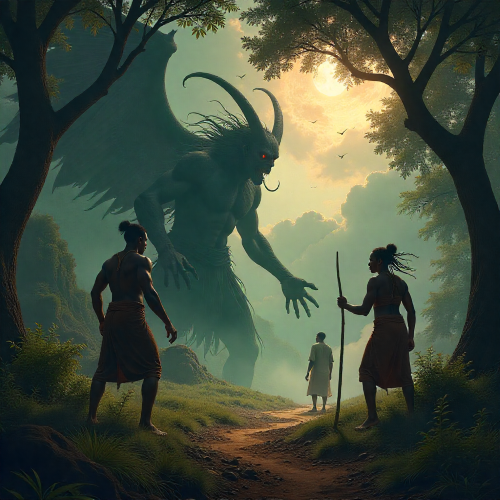Cursed Sword of Balin and the Tragedy of Destiny
Listen
At a glance
| Description | |
|---|---|
| Mythology | Arthurian Mythology |
| Cursed Individual(s) | Sir Balin |
| Cursed By | The Sword |
| Primary Consequence | Kills his brother, dies tragically |
| Symbolism | Hubris, fate, tragic hero |
Cursed Sword of Balin
Introduction
The Cursed Sword of Balin stands as one of the most haunting symbols in Arthurian legend. Known through the tragic story of Sir Balin, or Balin le Savage, this weapon is tied to prophecy, betrayal, and the destructive force of unrestrained anger. The sword becomes more than a weapon—it transforms into the agent of Balin’s downfall and the spark for a series of calamities that ripple through Camelot. His tale captures the delicate tension between destiny and free will, revealing how a single choice can spiral into personal tragedy and the ruin of a kingdom.
Mythological Background
The myth of the Cursed Sword of Balin emerges from the Post-Vulgate Cycle and Sir Thomas Malory’s Le Morte d’Arthur, where Balin is introduced as a knight known for both skill and volatility. After killing a cousin of King Arthur, Balin endures disgrace and captivity. Upon his release, he becomes entangled in supernatural forces that steer him toward unavoidable tragedy. His interactions with the Fisher King, Merlin, and the mysterious damsel carrying the sword link his personal misfortune to the wider Arthurian world. The curse does not operate in isolation—it intertwines with motifs such as the Waste Land, where the spiritual failings of a knight manifest as the desolation of a realm.
Origin of the Curse
The curse begins when a damsel arrives at Arthur’s court bearing a sword that only a knight without wickedness can draw. Balin succeeds, unknowingly binding himself to a prophecy of destruction. The damsel reveals that the sword is bound to doom its wielder, foretelling the death of the one Balin loves most. Balin refuses to surrender it, driven by pride and the belief that he can control his fate. The curse deepens when Balin slays the Lady of the Lake in retaliation for his mother’s death—an impulsive act that sets the tone for the tragedies that follow. The sword’s doom is rooted not in sorcery alone but in the combination of Balin’s unchecked wrath and the divine prophecy tied to the blade’s history.
Nature of the Curse
The Cursed Sword of Balin operates on multiple levels, affecting both people and the land. On a personal level, it guarantees sorrow, culminating in the fatal duel between Balin and his brother Balan, each unaware of the other’s identity. This fratricide becomes the curse’s most devastating fulfilment. On a broader scale, the sword becomes the instrument of the Dolorous Stroke, the blow Balin delivers to King Pellam, the Fisher King. This single act transforms Pellam’s kingdom into the barren Waste Land, linking the spiritual wound of the king to the land’s collapse. Through the sword, the curse becomes a fusion of personal tragedy and ecological devastation—an embodiment of fate intertwined with the moral state of the hero.
Victims and Key Figures
The chief victims of the curse are Balin and Balan, whose bond and loyalty are shattered by the prophecy’s tragic fulfilment. Their final duel is both heartbreaking and inevitable. King Pellam also suffers profoundly from the Dolorous Stroke, becoming the wounded Fisher King whose pain drains vitality from his land. The damsel who brings the sword to Arthur’s court serves as the catalyst, delivering both the weapon and its warning. Merlin, acting as prophet and interpreter, identifies the curse’s consequences but cannot alter its course. Even King Arthur becomes indirectly victimised, witnessing the destructive power of personal flaws within his court and the fragility of his kingdom’s spiritual balance.
Consequences and Resolution
The curse’s consequences spread across Arthurian lore. Balin and Balan’s mutual death brings the prophecy to completion, ending their story in profound sorrow. King Pellam’s wound results in the Waste Land, where the once-fertile kingdom falls into decay and sterility. This catastrophe echoes through the broader legend, eventually prompting the quest for the Holy Grail, which becomes the only hope for restoring the Fisher King and healing the land. The curse does not end with Balin’s death—it becomes a lingering stain on the realm, resolved only through the intervention of a pure knight such as Galahad. Through this, the myth conveys that redemption must come from spiritual purity rather than brute strength.
Symbolism and Moral Lessons
The Cursed Sword of Balin symbolizes the peril of wielding power without wisdom. The tale warns against the destructive force of impulsive anger and the consequences of ignoring prophetic caution. The sword embodies destiny, but it also exposes the flaws of its bearer. The Waste Land serves as an allegory for the spiritual corruption that arises from violence and poor judgment, reflecting medieval beliefs that the state of a realm mirrors the virtue of its rulers and heroes. Ultimately, the myth teaches that heroism requires restraint, humility, and moral clarity—qualities Balin tragically lacks.
Cultural Impact and Legacy
The Cursed Sword of Balin has become one of the darkest and most influential elements of Arthurian lore. Its themes of fatal prophecy, cursed relics, and fratricidal tragedy have inspired modern fantasy works, from Tolkien’s enchanted blades to contemporary depictions of cursed heirlooms in games and novels. The story resonates because it blends mythic fatalism with deeply human emotions—loyalty, regret, pride, and grief. As a symbol of the consequences of rash choices, the Cursed Sword of Balin continues to captivate storytellers, reinforcing its legacy as one of Camelot’s most haunting myths.
Source
Kelley, R. L. (1979). Malory’s “Tale of Balin” Reconsidered. Arthurian Studies Journal, 8, 75-95.
Nightbringer. (n.d.). Sir Balin the Savage. Retrieved November 2025, from https://nightbringer.se/sir-balin-the-savage
StorytellingDB. (2024, May 16). Sir Balan: The Tragic Brother of Balin. https://storytellingdb.com/sir-balan
Wikipedia contributors. (2025). Wasteland (mythology). Wikipedia. https://en.wikipedia.org/wiki/Wasteland_(mythology)
Malory, T. (1998). Le Morte d’Arthur (J. Cowen, Ed.). Penguin Classics.
Lacy, N. J. (Ed.). (1996). The New Arthurian Encyclopedia. Garland Publishing.
Loomis, R. S. (1959). The Grail: From Celtic Myth to Christian Symbol. Columbia University Press.
Weston, J. L. (1920). From Ritual to Romance. Cambridge University Press.
Ford, D. N. (2006). The Fisher King: The Wound and the Quest. Mythlore, 25(3), 45–58.
Nitze, W. A. (1934). The Fisher King in the Grail Romances. Modern Philology, 31(4), 385–401.
Frequently Asked Questions
What is the Cursed Sword of Balin in Arthurian legend?
It is the prophetic blade drawn by Sir Balin that causes fratricide, the Dolorous Stroke, and the creation of the Waste Land.
Why was the sword cursed?
The sword was bound to a prophecy that foretold destruction to the wielder and those closest to him, triggered by Balin’s impulsive actions.
Who were the main victims of the curse?
Sir Balin, his brother Balan, and King Pellam, whose kingdom became the Waste Land after the Dolorous Stroke.
How does the cursed sword relate to the Fisher King?
Balin uses the sword to wound King Pellam, turning him into the Fisher King and causing his kingdom’s desolation.
Is the Cursed Sword of Balin connected to the Grail Quest?
Yes, the damage caused by the sword sets the stage for the Holy Grail quest, which aims to heal the Fisher King and restore the land.






